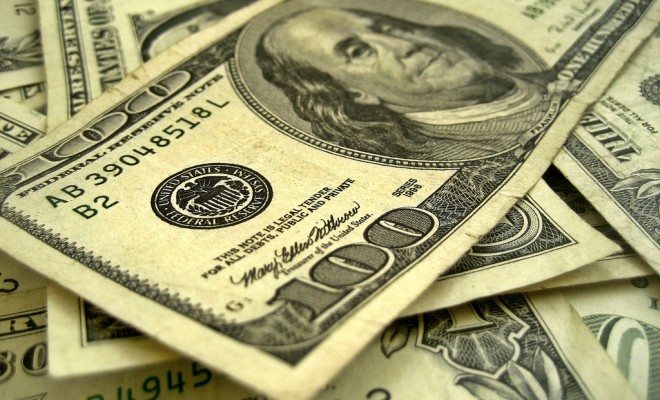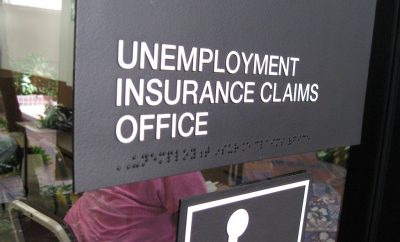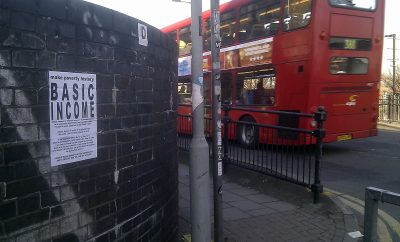 Image courtesy of [401(K) 2012/401kcalculator.org via Flickr]
Image courtesy of [401(K) 2012/401kcalculator.org via Flickr]
Business & Economics
No Strings Attached: Replacing Welfare With a Guaranteed Income
Since President Lyndon Johnson’s War on Poverty, there has been a debate on how to best give the poorest Americans a chance at a prosperous life. Federal assistance programs have come and gone with plenty of critics, but what if the solution was as simple as giving every American a check? Read on to learn about the plan that’s uniting liberals and conservatives.
What is a basic income?
A basic income is just what it sounds like: the government gives every citizen enough money to survive. This check would replace food stamps, unemployment insurance, and most of our welfare system. Most American proposals for a basic income provide for $1,000 a month, or roughly how much someone earning the federal minimum wage, $7.25 per hour, makes.
Why replace our current welfare system? If it ain’t broke…
It’s broken, very broken. This is partly because the term “welfare system” does not refer to one system. It is multiple social programs managed by different government bureaucracies. Food stamps, unemployment insurance, Temporary Assistance For Needy Families (TANF), and Child Nutrition programs (CHIP) are all examples of social programs that are broadly referred to as welfare. According to the Cato Institute, there are 126 different federal assistance programs. Anyone trying to receive government assistance has to apply to all of these separate programs which carry their own paperwork and contradictory requirements.
There is also the problem known as the “poverty trap.” This is when those receiving assistance risk losing money by taking a higher paying job. It sounds contradictory, but this anecdote from Harvard Professor Jeff Liebman explains the problem.
The woman in his story, let us call her Mary, moves from a job that pays $25,000 to a job that pays $35,000. This is great for her, except for the fact that she relies on government benefits. With this new job, she earns enough so that she no longer qualifies for many of the social programs she depends on. She no longer can get free health insurance, she has lost title eight housing benefits, she lost her child care voucher, she lost her EITC benefits, and she is now paying payroll tax. Added all up, Mary is actually making less money with a higher paying job. When welfare recipients are discouraged from taking higher jobs, they are discouraged from improving their lives to the point where they will no longer need welfare.
A basic income would get rid of the poverty trap. Mary could quit her lower salary job and even take her time to find a job that is right for her without having to worry about losing her support system.
For being such a failure, the current welfare system is also really expensive. America spends approximately $1 trillion on the welfare system. That’s $14,848 per person. This graph from The Heritage Foundation gives an idea of how that is split up between programs.
Basic income would also be expensive, but it would provide recipients the freedom they need to find good work.
Wouldn’t everyone just stop working?
It’s possible. While proponents of a basic income argue that removing the poverty gap is a huge incentive to work, critics argue that an unconditional check in the mail will disincentivize work. Belgian philosopher Philippe Van Parijs, describes the basic income as giving impoverished people “the real freedom to pursue the realization of one’s conception of the good life.” The good life in one person’s eyes could be having a lucrative job. In another’s eyes, it could be living off of the government dime and doing nothing. Proponents of the basic income, like US Basic Income Guarantee Network Board Member Alan Sheahen, believe that most people want to work:
This is a problem that nearly every welfare plan has to grapple with. Requiring work puts people in a poverty trap. Unconditional benefits allow them to coast without work.
Does any country do this?
There is no country that has replaced their welfare system with a guaranteed basic income. However, there are countries that give their citizens unconditional money and there are countries that have proposed this plan.
The best example would be in India, where a pilot program was implemented in 2011. This pilot program included an urban program, whose recipients were given 1000 rupees a month, a rural program, whose recipients were given 200 rupees a month, and a control group, whose participants received no basic income.
What happened next was amazing: Participants in the program spent more on healthy food than they did when they received subsidized food. These groups also spent more on medical services, and housing. The most impressive result was that these families spent significantly more on school supplies than the control group. As a result, school attendance in the participating villages increased to three times the level of the control villages.
Switzerland might become the first country to implement a basic income nationwide. They will soon vote on a referendum to their constitution guaranteeing the right of a basic income to all. However, it is unclear how a Swiss basic income would be implemented, if it were to even pass. There have been no studies in Switzerland, and only one advocacy group has been pushing the issue. Switzerland’s form of democracy requires only 100,000 signatures to get any issue on the ballot as a referendum, so the plan might not even have broad public support.
Has this ever been proposed in the United States?
The closest proposal to a guaranteed income in the United States was President Richard Nixon’s Family Assistance Plan (FAP). FAP was not a basic income for all, but it was similar. Any family with children where one of the parents worked or were registered with the United States Employment services was eligible for a minimum stipend. Once again, it was not a check in the mail for every American, but it was and still is the closest proposal to basic income this country has ever seen.
So, what happened? It passed the House of Representatives, but died in a Senate committee. Conservatives thought the idea of free money was too far to the left and Democrats thought the work requirement placed it too far to the right.
Here’s Nixon’s indictment of the welfare system and presentation of FAP, courtesy of the Richard Nixon Foundation:
In modern America, the closest example of a basic income is in Alaska, where the state unconditionally gives a portion of their oil revenues to their citizens. The payout varies depending on oil sales, so it is not a dependable source of income, but it is still significant.
Is this a liberal or conservative idea?
Actually, it is both. Liberals and conservatives have both embraced a guaranteed basic income.
Milton Friedman, one of the most influential conservative economists ever, proposed replacing the welfare system with a “negative income tax.” Every citizen would get a tax transfer, and would then be taxed on that transfer based on how much money they earned. Friedmann, like other prominent conservatives, supported the basic income because it took power away from the federal government and the many bureaucracies that managed the welfare state.
Liberals like the basic income because it works to reduce inequality. It also has the added benefit of giving workers the ability to demand better work conditions from employers without fearing a loss of financial security.
Since this is so bipartisan, is it going to happen?
Unlikely. Americans are not the biggest fans of redistribution, and a basic income is redistribution at its purest form. In a nation where 60 percent of the citizenry believe that the poor can become rich by trying harder, it is unlikely that a basic income will gain broad public support.
Watch this report from PBS to learn about the broad support basic income has amongst liberal and conservative thinkers, the movements in Europe to enact similar plans, and the opposition it faces at home.
Conclusion
While support for a basic income reaches across the aisle, it is too untested to be implemented in a country as large as the United States and it goes against the American ideal of earning every dollar made. Keep an eye on countries like Switzerland and India to see if this really is the solution to poverty that the world has been looking for.
Resources
Primary
Basic Income News: Indian: Basic Income Pilot Project Finds Results of India’s pilot program
Additional
PBS Newshour: Will a Guaranteed Income Ever Come to America?
City Journal: Why Not a Negative Income Tax?
Adam Smith Institute: The Ideal Welfare System is a Basic Income
Slate: EITC Isn’t the Alternative to a Minimum Wage, This is
Economist: The Cheque is in the Mail
Harvard University: Fairness and Redistribution
Economist: Taxing Hard-Up Americans at 95 Percent
Washington Post: Thinking Utopian: How About a Universal Basic Income?
Bloomberg: The Swiss Join the Fight Against Inequality
Basic Income Earth Network: Quarterly Newsletter








Comments